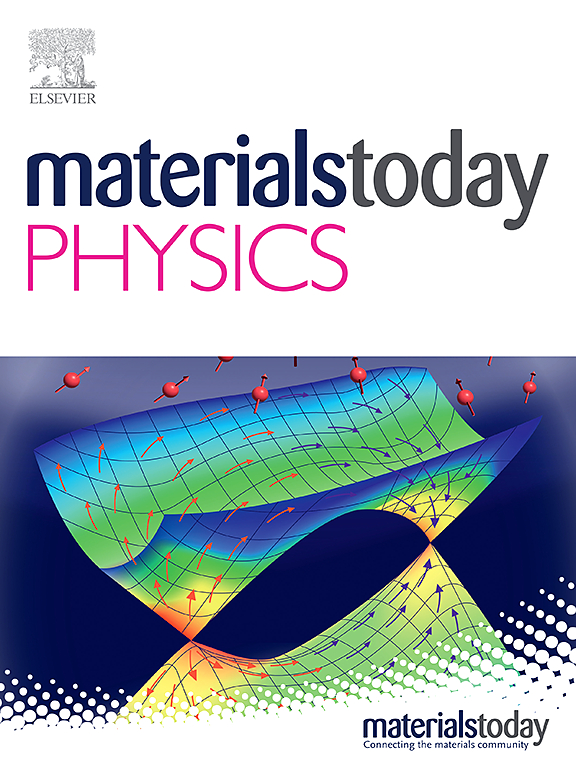基于迁移学习的二维单层材料带隙的精确预测
IF 10
2区 材料科学
Q1 MATERIALS SCIENCE, MULTIDISCIPLINARY
引用次数: 0
摘要
带隙是设计和发现具有理想性能的新型功能材料的关键因素。原则上,带隙可以用准粒子自能修正的第一性原理计算精确地预测,然而,这是非常耗时的,因此仅限于小系统。在这项工作中,我们使用预训练的神经网络架构来计算标准Perdew-Burke-Ernzerhof (PBE)函数计算的带隙,我们提出了一个迁移学习(TL)模型,可以轻松准确地预测任何单层材料的带隙,其中使用一小组gw计算的带隙作为训练数据。与一般的机器学习算法相比,tl驱动的模型表现出更好的预测性能,这体现在实际带隙和预测带隙之间的Pearson相关系数(平均绝对误差降低)从71%提高到97%(0.55到0.27)。重要的是,利用所建立的具有良好可解释性的TL模型预测了从C2DB (Computational 2D Materials Database)中检索到的具有非零PBE间隙的2915个单层体系的GW间隙,为探索具有合适带隙的高性能功能材料提供了丰富的样本空间。本文章由计算机程序翻译,如有差异,请以英文原文为准。
Accurate prediction of band gap of two-dimensional monolayer materials via transfer learning
Band gap is a crucial factor for the design and discovery of novel functional materials with desired properties. In principle, the band gap can be accurately predicted by using first-principles calculations with quasiparticle self-energy corrections, which is however very time-consuming and thus limited to small systems. In this work, using a pre-trained neural network architecture for the band gap calculated with standard Perdew-Burke-Ernzerhof (PBE) functional, we propose a transfer learning (TL) model to readily and accurately predict the band gap of any monolayer materials, where a small set of GW-calculated gaps is used as training data. Compared with general machine learning algorithms, the TL-driven model shows superior predictive performance, as manifested by improved Pearson correlation coefficient (reduced mean absolute error) from 71% to 97% (0.55 to 0.27) between the real and predicted band gaps. Importantly, the established TL model with good interpretability is leveraged to predict the GW gaps of 2915 monolayer systems that are retrieved from the Computational 2D Materials Database (C2DB) with non-zero PBE gaps, providing a rich sample space for exploring high performance functional materials with suitable band gap.
求助全文
通过发布文献求助,成功后即可免费获取论文全文。
去求助
来源期刊

Materials Today Physics
Materials Science-General Materials Science
CiteScore
14.00
自引率
7.80%
发文量
284
审稿时长
15 days
期刊介绍:
Materials Today Physics is a multi-disciplinary journal focused on the physics of materials, encompassing both the physical properties and materials synthesis. Operating at the interface of physics and materials science, this journal covers one of the largest and most dynamic fields within physical science. The forefront research in materials physics is driving advancements in new materials, uncovering new physics, and fostering novel applications at an unprecedented pace.
 求助内容:
求助内容: 应助结果提醒方式:
应助结果提醒方式:


